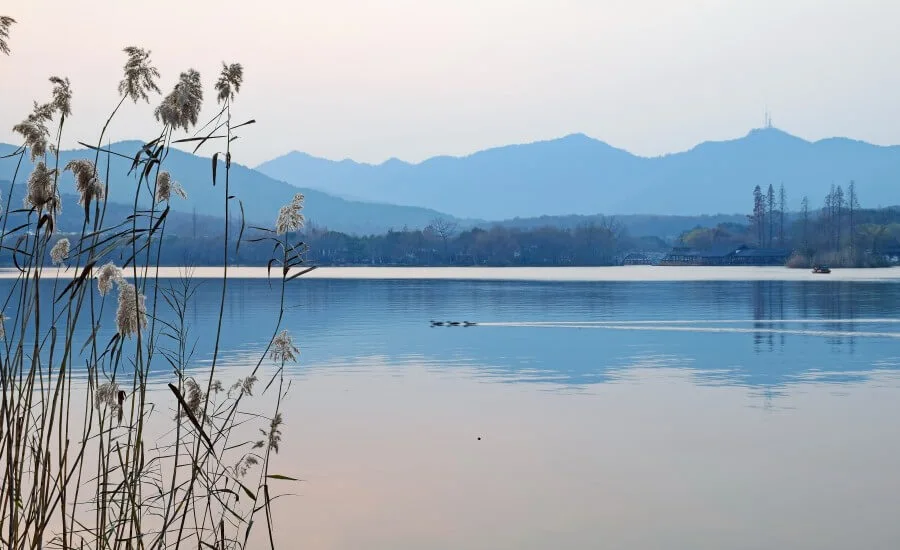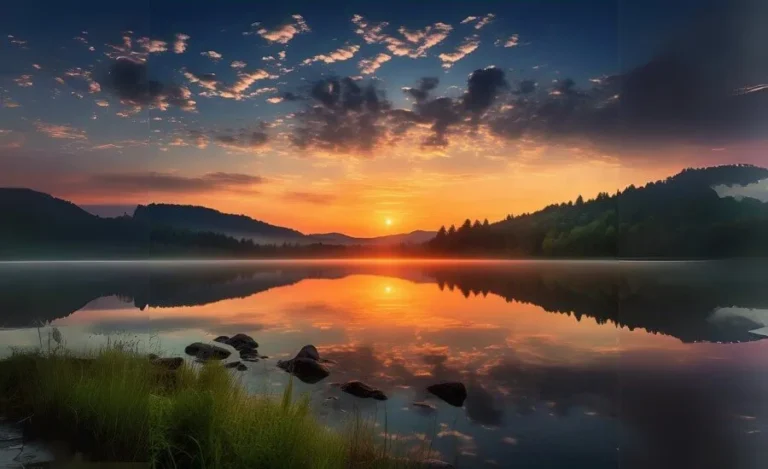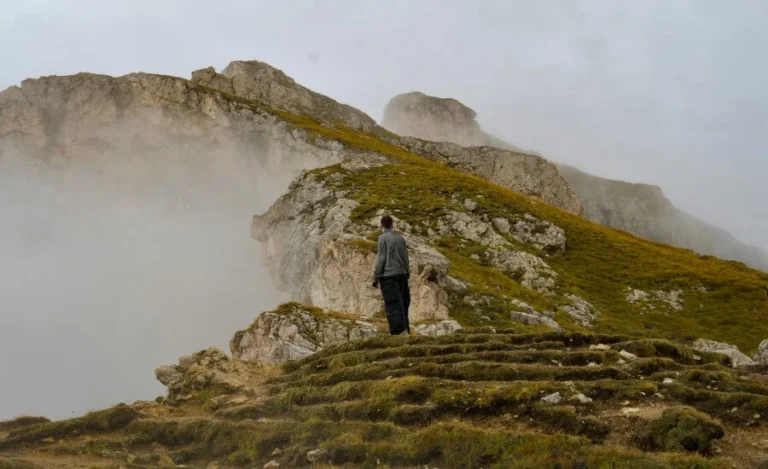
There’s an undeniable pull that bodies of water exert on the human spirit. Oceans roar with power, rivers carve paths of constant change, but lakes often hold a unique quality of stillness, reflection, and depth. They mirror the sky, hold secrets in their depths, and invite contemplation. Across cultures and throughout history, certain lakes have been imbued with an even deeper significance, revered as sacred spaces – places of pilgrimage, healing, myth, and profound connection to the divine or the natural world . Visiting these places offers more than just scenic beauty; it presents an opportunity for Spiritual Journeys to Sacred Lakes in the world.
Imagine sitting by the shore of a high-altitude Andean lake steeped in Incan lore, or meditating beside waters in the Himalayas considered holy by multiple faiths, or simply finding profound peace by a local lake that feels personally sacred. This guide explores the unique potential of sacred lakes as destinations for mindful, unplugged travel.
We’ll delve into why these waters often feel so special, touch upon revered lakes globally, explore practices for deepening your connection by the water’s edge, emphasize the importance of respectful visitation, and celebrate the profound peace found when disconnecting in these powerful natural hidden sanctuaries.
The Mirror to the Soul: Why Lakes Evoke Stillness & Sacredness

Why do lakes, in particular, often feel serene, contemplative, and even sacred? Their physical characteristics naturally lend themselves to introspection and a sense of peace.
- Stillness & Reflection: Unlike flowing rivers or crashing oceans, lakes often possess a profound stillness, especially in calm weather. Their surfaces act as natural mirrors, reflecting the sky, the surrounding landscape, and perhaps, metaphorically, our own inner state. This invites quiet observation and self-reflection.
- Sense of Containment & Depth: Lakes feel contained, holding vast amounts of water within defined shores. This can evoke feelings of depth, mystery, and hidden potential, prompting contemplation about what lies beneath the surface – both literally and figuratively.
- Source of Life: Like all water bodies, lakes are fundamental sources of life, supporting ecosystems and often providing vital resources for human communities. This connection to life-giving sustenance naturally inspires reverence.
- The “Blue Mind” Effect: Scientific research increasingly supports the idea that being near, in, or on water triggers a “mildly meditative state” known as “Blue Mind”. Proximity to water can lower stress hormones, reduce heart rate and blood pressure, enhance feelings of calm, boost creativity, and foster a sense of awe and connection. The gentle sounds and repetitive motion of water capture our attention effortlessly, calming the mind.
These inherent qualities, combined with cultural narratives and spiritual beliefs, elevate many lakes from mere bodies of water to places of profound significance and deep meditative potential.
Journeys to Revered Shores: Exploring Global Sacred Lakes

Across the globe, numerous lakes hold deep spiritual or cultural significance, becoming focal points for pilgrimage, rituals, and legends. The reasons for their sacred status vary widely: association with deities or creation myths, historical events, unique natural phenomena, or their role as vital life sources for local communities. While this list is far from exhaustive, here are a few examples illustrating this global phenomenon:
- Lake Titicaca (Peru/Bolivia): Nestled high in the Andes, this vast lake is considered the birthplace of the Inca civilization, where the sun god Inti is said to have emerged. Isla del Sol and Isla del Luna remain important spiritual sites. Visiting involves navigating its deep blue waters and interacting respectfully with the Uros people on their floating reed islands and other local communities.
- Pushkar Lake (India): A major Hindu pilgrimage site in Rajasthan, believed to have been created by Lord Brahma. Bathing in its waters, especially during the Kartik Purnima festival, is considered auspicious for cleansing sins. The surrounding town buzzes with temples and spiritual activity.
- Lake Mansarovar (Tibet Autonomous Region, China): A high-altitude freshwater lake revered in Hinduism, Buddhism, Jainism, and Bön. Circumambulating the lake (a challenging multi-day trek) is a sacred pilgrimage believed to cleanse karma. Its proximity to Mount Kailash adds to its immense spiritual significance.
- Khecheopalri Lake (Sikkim, India): Known as the “wish-fulfilling lake,” it’s sacred to both Buddhists (associated with Padmasambhava) and Hindus. Its serene setting amidst forests, and the belief that leaves don’t float on its surface for long, add to its mystique. Fishing and recreational activities are prohibited.
- Crater Lake (Oregon, USA): The deep, caldera lake holds spiritual significance for the native Klamath tribes, featuring in their creation stories and used for vision quests. Its intense blue color and dramatic setting evoke a sense of power.
- Lake Atitlán (Guatemala): Surrounded by volcanoes and traditional Mayan villages, this stunning lake is steeped in Mayan spirituality and folklore, considered by some to be a portal to the underworld.
Visiting such places requires more than typical tourism; it calls for a mindful approach, respecting the deep cultural and spiritual significance held by these waters and the communities connected to them. Always research the specific site and its protocols before visiting.
Water & Awareness: Mindful Practices for Your Lake Journey

The serene environment of a sacred lake provides a perfect setting for deepening mindfulness practices. Engaging consciously with the water element can enhance feelings of peace, connection, and self-awareness.
- Lakeside Sitting Meditation: Find a comfortable spot near the shore. Close your eyes gently or maintain a soft gaze towards the water. Focus on your breath, or use the gentle sounds of the water lapping the shore as your anchor. Notice thoughts and feelings arise and pass without judgment.
- Mindful Walking Along the Shore: Walk slowly and deliberately along the lake’s edge. Pay attention to the sensation of your feet on the ground, the movement of your body, the feeling of the air, the sounds around you, and the changing views of the water and landscape.
- Water Gazing: Similar to cloud watching, simply gaze softly at the surface of the lake. Notice the play of light, the ripples, the reflections. Allow your mind to quiet as you become absorbed in the visual experience .
- Sensory Immersion: Consciously engage all senses appropriate to the situation. Feel the temperature of the air, perhaps the coolness of mist rising from the water. Listen intently to the sounds – water, birds, wind. Observe the colours and textures. If appropriate and permitted, feel the water itself.
- Reflective Journaling: The quiet atmosphere is ideal for journaling. Write about your feelings, observations about the lake and its surroundings, reflections sparked by the site’s sacredness, or insights that arise during moments of stillness.
- Water Breathing Visualization: While breathing deeply, imagine drawing in the pure, cleansing energy of the lake water on your inhale, filling your body with peace. On your exhale, imagine releasing any stress, tension, or negativity back out, letting it dissolve.
These practices help you move beyond simply seeing the lake to truly experiencing its calming and potentially transformative presence.
Respectful Ripples: Navigating Sacred Sites with Care

Visiting a place held sacred by others requires sensitivity, humility, and a commitment to respectful behavior. Our actions create ripples, and it’s vital they are ones of respect, not disturbance.
Essential Etiquette:
- Research & Learn: Before visiting, learn about the lake’s cultural and spiritual significance, the traditions of the local communities, and any specific visitor guidelines or protocols. Understanding the context fosters respect.
- Seek Permission: Always ask before taking photos or videos of people, ceremonies, or specific shrines. Be prepared to accept ‘no’ graciously. If caretakers or community members are present, ask permission before entering certain areas or performing any personal rituals.
- Dress Modestly & Appropriately: Adhere to local customs regarding dress code, which often involves covering shoulders and knees, especially near temples or during ceremonies.
- Observe Quietly & Respectfully: Maintain a quiet demeanor. Avoid loud conversations or disruptive behavior. If ceremonies are occurring, observe from a distance without interfering or distracting practitioners.
- Follow Designated Paths: Stay on marked trails or walkways to protect fragile ecosystems and avoid intruding on restricted areas.
- Leave No Trace: This is paramount. Pack out everything you pack in – absolutely no littering. Do not move rocks, pick plants, remove artifacts, or disturb wildlife. Avoid using polluting soaps or sunscreens near the water. Do not build rock cairns.
- Mindful Offerings (If Appropriate): Do not leave offerings unless you know it’s culturally acceptable and understand the proper way to do so. Often, intangible offerings like prayer, song, or simply respectful presence are more appropriate.
- Support Locals Ethically: If purchasing crafts or services, do so directly from local community members, ensuring fair prices and ethical sourcing. Consider hiring local guides who can offer deeper insights respectfully.
Approaching sacred lakes as a humble guest, rather than just a tourist ticking off a sight, ensures your visit honors the place and its people.
Unplugged by the Water’s Edge: Deepening the Connection

The serene environment of a sacred lake provides an unparalleled opportunity to practice digital disconnection and experience the profound benefits of being fully present. Choosing to put away smartphones and other devices allows for a much deeper immersion in the atmosphere and your inner experience.
Why Unplugging Enhances the Journey:
- Undisturbed Presence: Without the constant lure of notifications or the impulse to capture everything for social media, your attention can settle fully on the present moment – the water, the landscape, your inner state.
- Heightened Sensory Awareness: Free from screen distraction, your senses open up more fully to the subtle beauty around you – the sound of gentle waves, the feel of the breeze, the nuances of light on the water.
- Space for Reflection: Quiet, unplugged moments by the water allow thoughts and feelings to surface naturally. It creates space for introspection, contemplation, and potentially deeper insights prompted by the sacred atmosphere.
- Authentic Connection: Whether alone or with companions, disconnecting fosters more genuine connection. Conversations flow more naturally, shared silence feels more comfortable, and you connect more deeply with the ‘spirit of place’.
- Respect for Sacredness: In many sacred sites, using technology (especially phones for calls or photos without permission) can be seen as disrespectful. Choosing to unplug aligns with an attitude of reverence.
Practical Steps:
- Turn your phone completely off or put it on airplane mode while at the lake shore.
- Leave devices in your bag or accommodation.
- Bring analog alternatives: a journal, sketchbook, physical book about the site or for reflection.
- Set an intention beforehand to be fully present and tech-minimal during your visit.
Disconnecting by the water’s edge allows the lake’s quiet wisdom and the site’s sacred energy to resonate more deeply within you.
Sacred Lakes of the World: Meditative Journeys on Water

Embarking on Sacred Lakes of the World: Meditative Journeys on Water is a unique form of travel that blends outer exploration with inner discovery. It involves seeking out these special places not just for their beauty, but for their potential to inspire peace, reflection, and a connection to something larger than oneself. This approach requires more than just booking a ticket; it demands mindfulness, respect, and a willingness to slow down and be present.
The journey involves understanding the cultural and spiritual significance of the site, engaging your senses fully with the tranquil environment often found near water, practicing mindful observation and reflection, and treading lightly with deep respect for local traditions and ecosystems. Choosing to disconnect from digital distractions further enhances this immersion, allowing the unique atmosphere of these revered waters to quiet the mind and soothe the soul.
Whether you travel far to a world-renowned sacred lake or find profound connection at a quiet local pond that feels sacred to you, the principles remain the same: approach with reverence, listen with presence, and allow the still waters to mirror your own inner depths.
Common Concerns & Solutions for Visiting Sacred Lakes

Visiting sacred sites, especially remote ones, can raise questions about logistics and ethics.
Concern 1: “How do I ensure my visit is respectful and not intrusive?”
- Solution: Thorough research beforehand is key (etiquette, significance). Ask permission whenever interacting with locals or considering photos/rituals. Dress modestly. Move quietly. Follow LNT principles strictly. Prioritize observation over interaction unless invited. If unsure, err on the side of caution and non-interference.
Concern 2: “Some sacred lakes seem very remote or difficult to access.”
- Solution: True, some require significant travel or pilgrimage (like Mansarovar). Start with more accessible sacred sites or even practice these mindful techniques at any peaceful lake near you. The meditative quality can be found in the practice itself, not just the fame of the location. Assess accessibility based on your travel style and physical ability.
Concern 3: “What if I don’t feel a ‘spiritual’ connection? Am I doing it wrong?”
- Solution: Let go of expectations for specific feelings or epiphanies. The goal is mindful presence and respectful observation. Simply experiencing the peace, the natural beauty, and contemplating the site’s significance is the experience. Focus on being present, not forcing a particular outcome.
Concern 4: “Are there safety concerns, especially near remote water bodies?”
- Solution: Standard travel safety applies. Research the area. Be aware of weather conditions (which can change rapidly near large lakes or mountains). If swimming or boating, understand water safety protocols and local conditions (currents, temperature). If hiking to a remote shore, use proper navigation tools and inform someone of your plans. Be mindful of wildlife.
Mindful Sacred Lake Visit Checklist
Prepare for a respectful and reflective journey with this checklist:
- Research Significance & Etiquette: Understand why the lake is sacred, local customs, dress codes, rules about offerings/photography.
- Set Mindful Intention: Define your purpose – seeking peace, reflection, connection, learning? Intend to be present and respectful.
- Plan Logistics Mindfully: Check accessibility, weather, necessary permits. Allow ample time; avoid rushing.
- Pack Respectfully: Modest clothing, reusable water bottle, minimal plastic, biodegradable toiletries (if staying nearby).
- Pack for Presence: Journal, pen, perhaps a relevant book (history, spirituality, nature). Leave unnecessary tech behind.
- Analog Tools (Optional): Physical map/guidebook, sketchpad, perhaps binoculars for wildlife. Red light flashlight if visiting at night.
- Check Local Support: Consider hiring ethical local guides for deeper insight or supporting local communities through fair purchases.
- Practice Non-Intrusion: Commit to observing quietly, staying on paths, leaving no trace, and asking permission.
- Prepare for Disconnection: Inform contacts of limited availability. Embrace the opportunity to be unplugged by the water.
Find Your Stillness by the Sacred Shore

There is a profound peace to be found by the still waters of the world, especially those places imbued with centuries of reverence and human connection. Sacred lakes offer more than just breathtaking scenery; they are invitations to slow down, turn inward, and connect with a sense of tranquility often lost in the noise of modern life. Undertaking a meditative journey to these shores, approached with mindfulness, respect, and a willingness to disconnect from digital distractions, can be a deeply restorative experience.
You’ve learned about the universal appeal of lakes, touched upon examples of sacred waters globally, explored mindful practices enhanced by the water element, and understood the vital importance of respectful visitation. You know that the deepest connection often comes when we silence the external static and allow ourselves to simply be present with the quiet majesty before us. Whether you travel across continents or find solace by a familiar local pond, the potential for inner stillness awaits.
Where might your own meditative journey on water take you? Seek out these places of power and peace. Go respectfully, tread lightly, listen deeply, and let the reflections on the water mirror the quiet wisdom within your own heart. Find your stillness by the sacred shore.
Tech-Free Activity Guide (Mindful Practices for Your Lake Journey)

Deepen your connection and presence during your visit to a sacred (or simply serene) lake with these tech-free, mindful practices:
- Extended Lake Gazing Meditation: Find a comfortable, safe spot to sit for 10-20 minutes. Soften your gaze and simply watch the surface of the lake. Notice the subtle changes in light, color, texture, and movement (ripples, waves). When your mind wanders, gently bring it back to observing the water.
- Shoreline Sensory Walk: Walk slowly along the water’s edge. Pay attention to the feeling of the ground underfoot (sand, pebbles, earth). Notice the temperature of the air and any breeze. Listen closely to the sound of the water lapping the shore and any other surrounding sounds (birds, wind). Pick up a smooth stone or interesting leaf (leaving it there afterwards) and mindfully explore its texture.
- Water Sound Meditation: Close your eyes (if comfortable and safe) and focus solely on the sounds related to the water – lapping, trickling, distant waves, birds near the water. Let the sounds wash over you without labeling or analyzing them.
- Reflection Journaling: Sit with your journal and reflect on the feeling of being near the lake. What emotions arise? What thoughts come to mind prompted by the scenery or the sacredness of the place? Write freely without censoring.
- Sky-Lake Observation: Observe the relationship between the sky and the lake. How does the lake reflect the clouds, the blue sky, the sunrise or sunset? Notice how the appearance of the water changes as the light in the sky changes.
- Gratitude Practice by Water: Focus on feelings of gratitude related to the lake or water in general. Be thankful for its beauty, its life-sustaining properties, the peace it offers, or the cultural significance it holds. Silently (or in your journal) list things you appreciate about this specific place.
Mindful Stillness: Simply sit or stand quietly by the water for 5-10 minutes, doing nothing other than being aware of your breath and the presence of the lake. Resist the urge to ‘do’ anything and just absorb the atmosphere.





